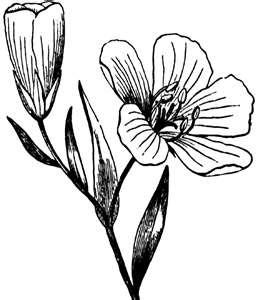Rahab was a harlot, a woman who many would destine to a place of low esteem (but not so with God!) God saw fit to use her - royally - in his grand plan of deliverance. Rahab of Jericho protected two Israelite spies by leading them away -- up to the flat roof of her house. Now..... days before the spies showed up.... what do you suppose Rahab was doing upon her roof. The answer is that this simple woman had harvested and soaked flax stalks in water to soften them and then she carefully spread them out to dry. She was planning to go back up to the roof to break the stalks into fibers, which she would separate and begin the process of spinning and weaving the fibers into linen.
Wow!! Just the word linen...fine linen clothing excites a seamstress / quilter! Linen cloth was naturally off-white in color.... or Rahab could chose a daring flair of color...maybe she would use the rind of pomegranates, or the bark of tress or other various herbs and roots for her base of color!
Alas.... did I go a'sewing and leave the Bible story in Joshua 2:6 ?? Well, when the spies showed up in a "PICKLE".... she led them up to the roof top.... she told them to hide themselves under the apparently large layout out --- under the piles of flax. And sure enough..... she aided and abetted...the lied and contrived a story of yonder which-a-way. And the boys were safe.... she gave them some rope to slide down from the roof to a safe get-away!
I might imagine that Rahab worked the flax into linen fabric... and she stitched and meditated a god while!
She heard of God's mighty ways.... she continued to spin her linen.... not knowing... but willing... her heart and will leaned to God's way!
Now.... this image.... I'd love to embroidery.... Take A Stitch Tuesday...hmnnnnn
WHAT IS FLAX?
flaks pesheth, also pishtah; linon (Mt 12:20)): The above Hebrew words are applied (1) to the plant: "The flax was in bloom" (the King James Version "bolled"; Ex 9:31); (2) the "stalks of flax," literally, "flax of the tree," put on the roof to dry (Josh 2:6); (3) to the fine fibers used for lighting: the King James Version "tow," "flax," the Revised Version (British and American). "A dimly burning wick will he not quench" (Isa 42:3); "They are quenched as a wick" (Isa 43:17). The thought is perhaps of a scarcely lighted wick just kindled with difficulty from a spark. (4) In Isa 19:9 mention is made of "combed flax," i.e. flax hackled ready for spinning (compare Hos 2:5,9; Prov 31:13). The reference in Jdg 15:14 is to flax twisted into cords. (5) In Jdg 16:9; Isa 1:31, mention is made of ne`oreth, "tow," literally, something "shaken off"--as the root implies--from flax. (6) The plural form pishtim is used in many passages for linen, or linen garments, e.g. Lev 13:47,48,52,59; Dt 22:11; Jer 13:1 ("linen girdle"); Ezek 44:17 f. Linen was in the earliest historic times a favorite material for clothes. The Jewish priestly garments were of pure linen. Egyptian mummies were swathed in linen. Several other Hebrew words were used for linen garments.
See LINEN.
Flax is the product of Linum usitatissimum, a herbaceous plant which has been cultivated from the dawn of history. It is perennial and grows to a height of 2 to 3 ft.; it has blue flowers and very fibrous stalks.
The tough fibers of the stalks, after the decay and removal of the softer woody and gummy material, make up the crude "flax." Linseed, linseed oil and oilcake are useful products of the same plant.
E. W. G. Masterman













No comments:
Post a Comment
Sew blessed ~ my Friend . . .